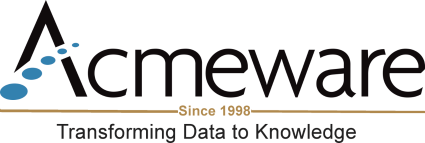The Centers for Medicare and Medicaid Services (CMS) and The Joint Commission (TJC) have quality reporting programs for Inpatient Psychiatric Facilities (IPFs).
Inpatient Psychiatric Facility Programs
For CMS, IPFs, which include psychiatric hospitals and psychiatric units of an acute care hospital or critical access hospital excluded from the Inpatient Prospective Payment System (IPPS), must meet the requirements of the Inpatient Psychiatric Facility Quality Reporting Program (IPFQR). For TJC, accredited IPFs must meet requirements set forth by TJC ORYX Performance Measure Reporting. These programs aim to encourage facilities and providers to improve the quality of inpatient care and inform consumers to help make decisions about their healthcare options.
CMS’ IPFQR is a pay-for-reporting program requiring IPFs to submit all quality measures in the form, manner and time as specified by CMS. If an IPF does not participate or does not meet all the reporting requirements, it will be subject to a 2.0 percentage point reduction of its annual update to its standard federal rate for that year.
Under IPFQR, IPFs are required to collect data and report on the following chart-abstracted measures for the 2022 reporting year impacting FY2024 payment determination. These measures are reported annually with a submission period of July 1 to August 15, 2023, for CY 2022 reporting.
- HBIPS-2: Hours of Physical Restraint Use
- HBIPS-3: Hours of Seclusion Use
- HBIPS-5: Patients Discharged on Multiple Antipsychotic Medications with Appropriate Justification
- TR-1: Transition Record with Specified Elements Received by Discharged Patients
- SMD: Screening for Metabolic Disorders
- SUB-2: Alcohol Use Brief Intervention Provided or Offered and
SUB 2a: Alcohol Use Brief Intervention - SUB-3: Alcohol and Other Drug Use Disorder Treatment Provided or Offered at Discharge and
SUB-3a: Alcohol and Other Drug Use Disorder Treatment at Discharge - TOB-2: Tobacco Use Treatment Provided or Offered and
TOB-2a Tobacco Use Treatment - TOB-3: Tobacco Use Treatment Provided or Offered at Discharge and
TOB-3a: Tobacco Use Treatment at Discharge - IMM-2: Influenza Immunization (the only chart-abstracted measure in which the reporting period crosses over two calendar years, from October 1, 2022, through March 31, 2023, for the FY 2024 payment determination)
In addition to the chart-abstracted measures, IPFQR includes:
- COVID-19 Vaccination Coverage Among Health Care Personnel
- Claims-based measures
- Follow-Up After Psychiatric Hospitalization
- 30-Day All-Cause Unplanned Readmission Following Psychiatric Hospitalization in an IPF
- Medication Continuation Following Inpatient Psychiatric Discharge
- Non-measure data
- Total Annual Discharges
- Annual Discharges by Age Strata
- Annual Discharges by Primary Diagnostic Code
- Annual Discharges by Payer
For The Joint Commission, IPFs must report on the following required Hospital-Based Inpatient Psychiatric Services (HBIPS) measures quarterly to maintain their accreditation. Three of the four HBIPS measures are also required under CMS’ IPFQR Program.
- HBIPS-1: Admission screening for violence risk, substance use, psychological trauma history and patient strengths completed
- HBIPS-2: Hours of Physical Restraint Use
- HBIPS-3: Hours of Seclusion Use
- HBIPS-5: Patients Discharged on Multiple Antipsychotic Medications with Appropriate Justification
Across all measures, there are very few changes in the measure specifications from 2021 to 2022. In fact, TOB-2/2a and TOB-3/3a are the only measures with changes from 2021 to 2022. For these measures, in the Numerator Excluded Populations, the group ‘Light Smokers’ was removed. The Tobacco Use Status Data Element for both the numerator and denominator of these measures had a couple changes in the Notes for Abstraction section. The additions to the specification for 2022 are indicated in red.
- If there is any conflicting documentation about the patient’s tobacco use status, where there is documentation of both tobacco use and no tobacco use, g., RN assessment states patient does not use any tobacco products but there is also physician documentation in the H & P stating that the patient is a “smoker,” select Value “6” since tobacco use status is unable to be determined.
- When both daily and sporadic ("some days") tobacco use is documented, select Value "1".
As a reminder, IMM-2 had a change for Q4 of 2021. In the Numerator Included Population, the addition to the specification is indicated in red.
- Patients who have an allergy/sensitivity to the influenza vaccine, anaphylactic latex allergy or anaphylactic allergy to eggs, or for whom the vaccine is not likely to be effective because of bone marrow transplant within the past 6 months, or history of Guillian-Barre syndrome within 6 weeks after a previous influenza vaccination, or symptomatic suspected or confirmed COVID-19.
If you have questions about reporting measures for IPFs, please contact us.

